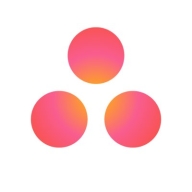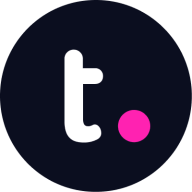

Asana and Teamwork are competing in the project management platform category. Asana seems to have the upper hand due to its intuitive interface and flexible pricing, while Teamwork stands out for its advanced collaboration tools and robust features.
Features: Asana offers customizable dashboards for task management, extensive third-party integrations, and improved productivity features. Teamwork provides comprehensive time tracking, enhanced collaboration tools, and project templates which cater to teams requiring detailed oversight.
Ease of Deployment and Customer Service: Asana is known for its quick deployment and easy onboarding facilitated by straightforward guidance and online resources. Teamwork, while requiring more setup time, offers personalized support and detailed customer service options ideal for teams preferring hands-on assistance.
Pricing and ROI: Asana provides flexible pricing plans that are suitable for enterprises of different sizes, leading to potentially faster ROI for smaller to medium teams. Teamwork's higher cost is justified by its extensive features, offering potentially greater ROI for larger teams requiring specific functionalities.


Asana is web-based software-as-a-service that helps teams coordinate and manage their work. It helps companies move faster by making sure everyone knows the team’s plan and process and who is doing what by when.
Each user can create projects using a list, board, calendar, or timeline view. Within each project, users can add tasks, subtasks, sections, comments, attachments, start and due dates, and custom fields. Project and task followers get notifications on changes or comments on the project and/or task in their Inbox. Individual users can see all of the tasks they're responsible for across all of their projects in a view called My Tasks.
Asana is available in English, French, Spanish, German, and Portuguese.
Teamwork is a comprehensive project management and collaboration software that enables teams to work together efficiently and effectively. With its wide range of features and intuitive interface, Teamwork helps streamline workflows, improve communication, and increase productivity.
One of the key features of Teamwork is its task management capabilities. Users can create tasks, assign them to team members, set due dates, and track progress. This ensures that everyone is on the same page and deadlines are met. Additionally, users can create task dependencies, allowing for better coordination and sequencing of work.
Teamwork also offers powerful collaboration tools. Users can create and share documents, files, and notes, making it easy for team members to access and collaborate on important information. The software also includes a messaging feature, enabling real-time communication and reducing the need for lengthy email threads.
Another notable feature of Teamwork is its time-tracking functionality. Users can log their time spent on tasks, providing valuable insights into project progress and resource allocation. This feature is particularly useful for tracking billable hours and ensuring accurate invoicing.
Teamwork also offers robust project planning and scheduling capabilities. Users can create project timelines, set milestones, and allocate resources. The software provides a visual representation of project progress, allowing teams to easily identify bottlenecks and adjust timelines accordingly.
Furthermore, Teamwork integrates with a wide range of third-party applications, such as Google Drive, Dropbox, and Slack, enhancing collaboration and streamlining workflows. The software also offers mobile apps, enabling users to stay connected and productive on the go.
We monitor all Project Management Software reviews to prevent fraudulent reviews and keep review quality high. We do not post reviews by company employees or direct competitors. We validate each review for authenticity via cross-reference with LinkedIn, and personal follow-up with the reviewer when necessary.